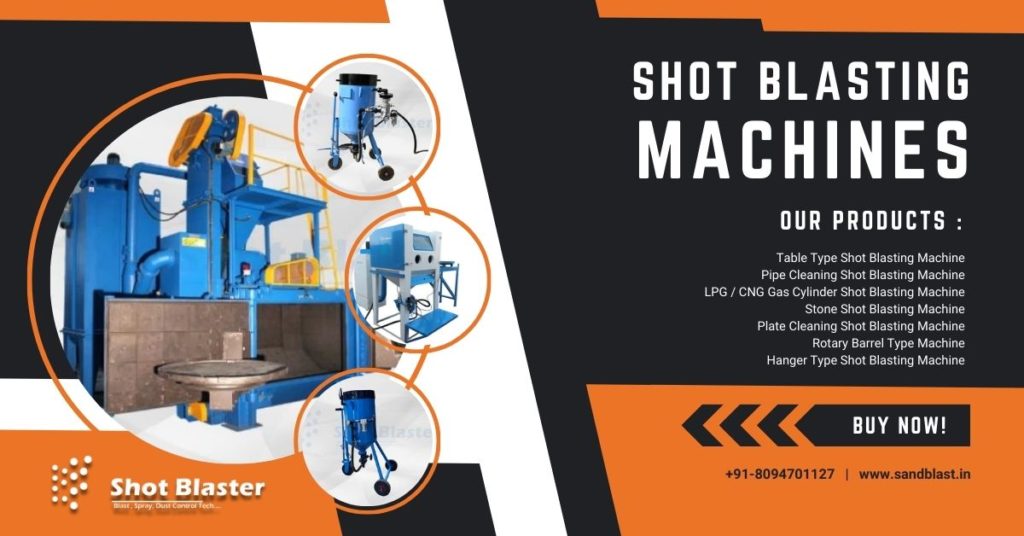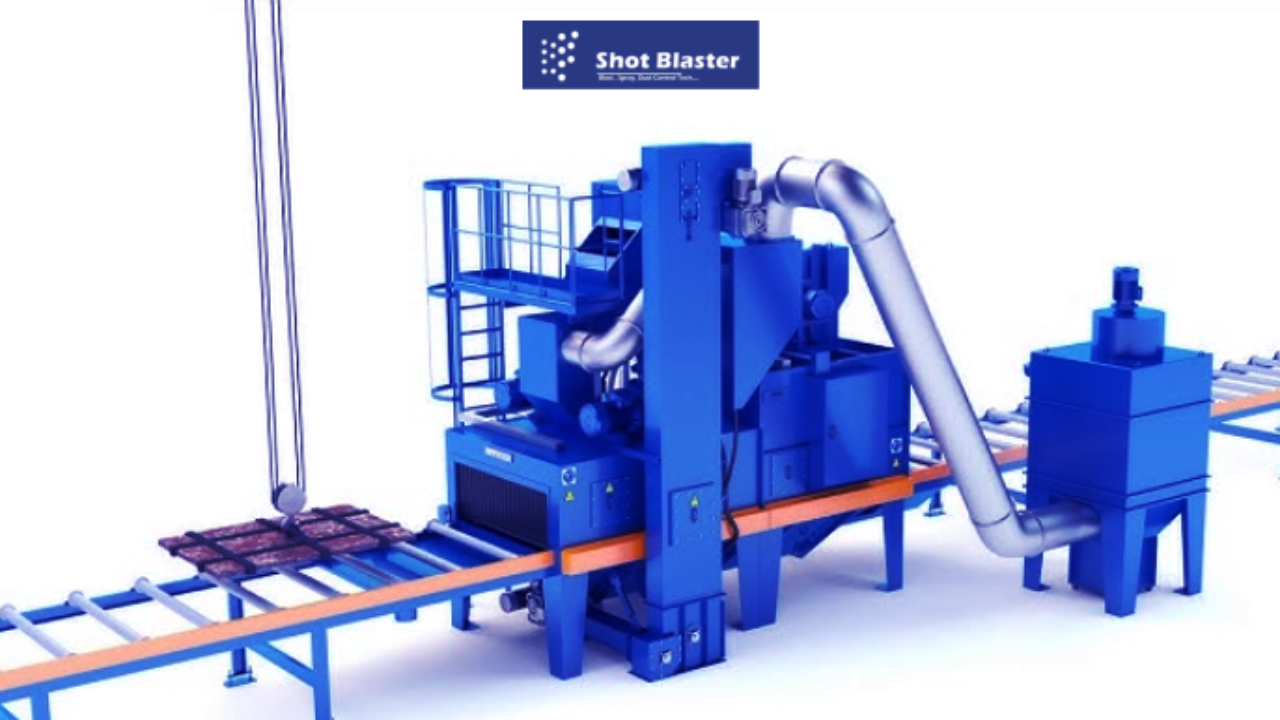Choosing the right abrasive for your shot blasting operations is crucial to ensure efficient surface preparation. Discover expert tips, benefits, and practical considerations in selecting the best abrasive for your needs!

Introduction
When it comes to shot blasting operations, selecting the right abrasive is more than just a technical decision; it’s the backbone of your entire process. Whether you’re aiming for a smooth, polished surface or preparing metal for coating, your choice of abrasive material can make all the difference.
Understanding the ins and outs of different abrasives, how they interact with various surfaces, and how they affect the efficiency of your shot blasting operation can save you time, money, and frustration. Shot blasting isn’t a one-size-fits-all process. There are a myriad of abrasives available, each designed for specific applications. So, how do you make the best choice?
In this article, we’ll break down everything you need to know about choosing the right abrasive for your shot blasting operations. By the end of this guide, you’ll be armed with the knowledge needed to optimize your blasting process and improve the overall quality of your results.
Why Choosing the Right Abrasive Matters
When you’re in the middle of a shot blasting operation, it’s easy to overlook the choice of abrasive, especially with all the other factors involved. However, the abrasive you choose plays a major role in:
- Efficiency: The right abrasive will help you get the job done faster, saving you both time and energy.
- Surface Finish: Different abrasives produce different textures, so the right choice will ensure the finish meets your specific requirements.
- Wear and Tear: Certain abrasives can be more abrasive on your equipment than others, leading to faster wear.
- Cost Effectiveness: Using the wrong abrasive might mean higher consumption, leading to more frequent replacements and higher costs.
Therefore, making an informed decision is key to improving both your operational and financial outcomes.
Find out more – https://riyasingh258.blogaaja.fi/reliable-shot-blasting-machine-provider-company-in-india/
Types of Abrasives for Shot Blasting Operations
Let’s take a closer look at the types of abrasives that are commonly used in shot blasting operations. Each has unique properties, and the right one for your application depends on the type of surface you’re working on and the desired outcome.
1. Steel Shot
Steel shot is one of the most widely used abrasives for shot blasting operations. It’s made from high-quality steel and is typically used for cleaning and preparing metal surfaces. Steel shot is best for:
- Heavy-duty applications: It works wonders when dealing with tough materials like castings, steel structures, and machinery.
- Cleaning & smoothing: If you need a smooth, even finish, steel shot is your go-to abrasive.
- Durability: Steel shot can be reused multiple times, which makes it a cost-effective option.
Pros:
- High reusability
- Ideal for cleaning and surface preparation
- Good for large-scale operations
Cons:
- May cause damage if not carefully managed
- Not ideal for delicate materials
2. Steel Grit
Steel grit is another option that’s commonly used in shot blasting operations, but it’s slightly different from steel shot. Steel grit is angular in shape, making it ideal for applications that require a more aggressive abrasive.
- Surface Profile Creation: Steel grit creates a rougher profile, making it perfect for preparing surfaces for coatings and paints.
- More Aggressive Action: Its angular shape means it can break through tough coatings and scale more effectively.
- Durability: It tends to have a longer lifespan compared to other abrasives.
Pros:
- Creates a rougher surface profile
- Perfect for coatings and paints
- Long-lasting
Cons:
- Can be too aggressive for certain applications
- Can damage softer materials
3. Aluminum Oxide
For more delicate and intricate shot blasting tasks, aluminum oxide is often the go-to choice. This abrasive is widely used in applications where precision is key.
- Versatility: Aluminum oxide works well on metals, glass, ceramics, and even plastic.
- Fine Finishes: If you’re aiming for a finer, more polished finish, aluminum oxide is ideal.
- Durability: It’s incredibly tough and can withstand heavy use without breaking down.
Pros:
- Provides a smooth, fine finish
- Can be used on various materials
- Very durable
Cons:
- Can be too fine for heavy-duty tasks
- Higher cost compared to other abrasives
4. Garnet Abrasive
If you’re working with materials that are sensitive to heat, garnet is an excellent choice. This abrasive is often used in applications that require a balance of efficiency and gentle handling.
- Gentle but Effective: Garnet abrasive is a great choice for delicate surfaces that need cleaning or profiling without causing damage.
- Environmentally Friendly: It’s non-toxic, making it a good option for eco-conscious operations.
- High Performance: It provides an excellent balance between speed and precision.
Pros:
- Gentle on surfaces
- Environmentally friendly
- Effective for detailed work
Cons:
- Can wear down faster than steel abrasives
- Not suitable for all surface profiles
5. Plastic Abrasives
Plastic abrasives are relatively new to the shot blasting market but have become quite popular in recent years. They are often used in applications that require a more controlled, delicate touch.
- Gentle Yet Effective: Plastic abrasives are ideal for cleaning and deburring without damaging the underlying surface.
- Great for Delicate Parts: They are commonly used in industries where precision is critical, such as aerospace and electronics.
- Low Wear on Equipment: Because they are softer than other abrasives, they cause less wear on both the equipment and the parts being treated.
Pros:
- Ideal for delicate surfaces
- Low wear on both equipment and parts
- Provides precision cleaning
Cons:
- Limited reusability
- Not effective for heavy-duty applications
Similar post – https://riyasingh258.blogaaja.fi/top-shot-blasting-machine-manufacturers-offering-affordable-solutions/
Factors to Consider When Choosing an Abrasive
So, now that we’ve covered the main types of abrasives, let’s dive into the factors you should keep in mind when making your selection for shot blasting operations.
1. Surface Material and Condition
According to Shot Blaster, one of the first things to consider is the material you’re working on. Different materials require different abrasives to achieve the best results. For example, softer materials like aluminum might require gentler abrasives like plastic or garnet, while tougher metals like steel will need harder abrasives like steel shot or grit.
2. Desired Finish
Think about the finish you want to achieve. Do you need a smooth, polished surface, or is a rough profile more important? If you’re preparing a surface for painting or coating, you’ll likely want a more textured finish, which would make abrasives like steel grit or aluminum oxide your best bet.
3. Environmental Impact
As more industries are focusing on sustainability, it’s important to think about the environmental impact of the abrasives you choose. Some abrasives, like plastic and garnet, are more environmentally friendly than others, making them a great choice if you’re aiming for eco-conscious operations.
4. Cost Efficiency
Cost is always a factor, especially when choosing abrasives for large-scale shot blasting equipment’s. Steel shot, for example, is highly durable and reusable, making it a cost-effective option. On the other hand, abrasives like aluminum oxide may offer a finer finish but tend to come with a higher price tag.
FAQs: Abrasive Shot Blasting Operations
Q1: How do I know which abrasive is best for my shot blasting needs?
A1: It all depends on the material you’re working with, the finish you’re after, and the level of aggressiveness required. If you’re working with tougher surfaces, steel shot or grit may be the way to go. If you need a finer finish, consider aluminum oxide.
Q2: Can I reuse shot blasting abrasives?
A2: Absolutely! Some abrasives like steel shot and grit can be reused multiple times before they need to be replaced, saving you money in the long run.
Q3: Are there any abrasives that are more environmentally friendly?
A3: Yes, abrasives like garnet and plastic tend to be more environmentally friendly than others. They are non-toxic and produce less waste.
Q4: Is it necessary to clean the abrasive before reuse?
A4: It’s a good idea to clean abrasives before reusing them. Contaminants can affect the quality of the shot blasting process, so it’s important to ensure the abrasives are free from debris.
Conclusion
Choosing the right abrasive for your shot blasting operations is crucial for efficiency, quality, and cost-effectiveness. Each abrasive has its unique strengths and weaknesses, and the key to success lies in understanding the material you’re working with, the desired finish, and the operational requirements. By considering all these factors carefully, you can make an informed decision that will help you achieve optimal performance.
In the end, whether you’re preparing surfaces for coatings, cleaning metals, or deburring delicate parts, the right abrasive can make all the difference in the world. So, take your time, explore your options, and make a choice that’s tailored to your specific needs. Happy blasting!



Leave a Reply